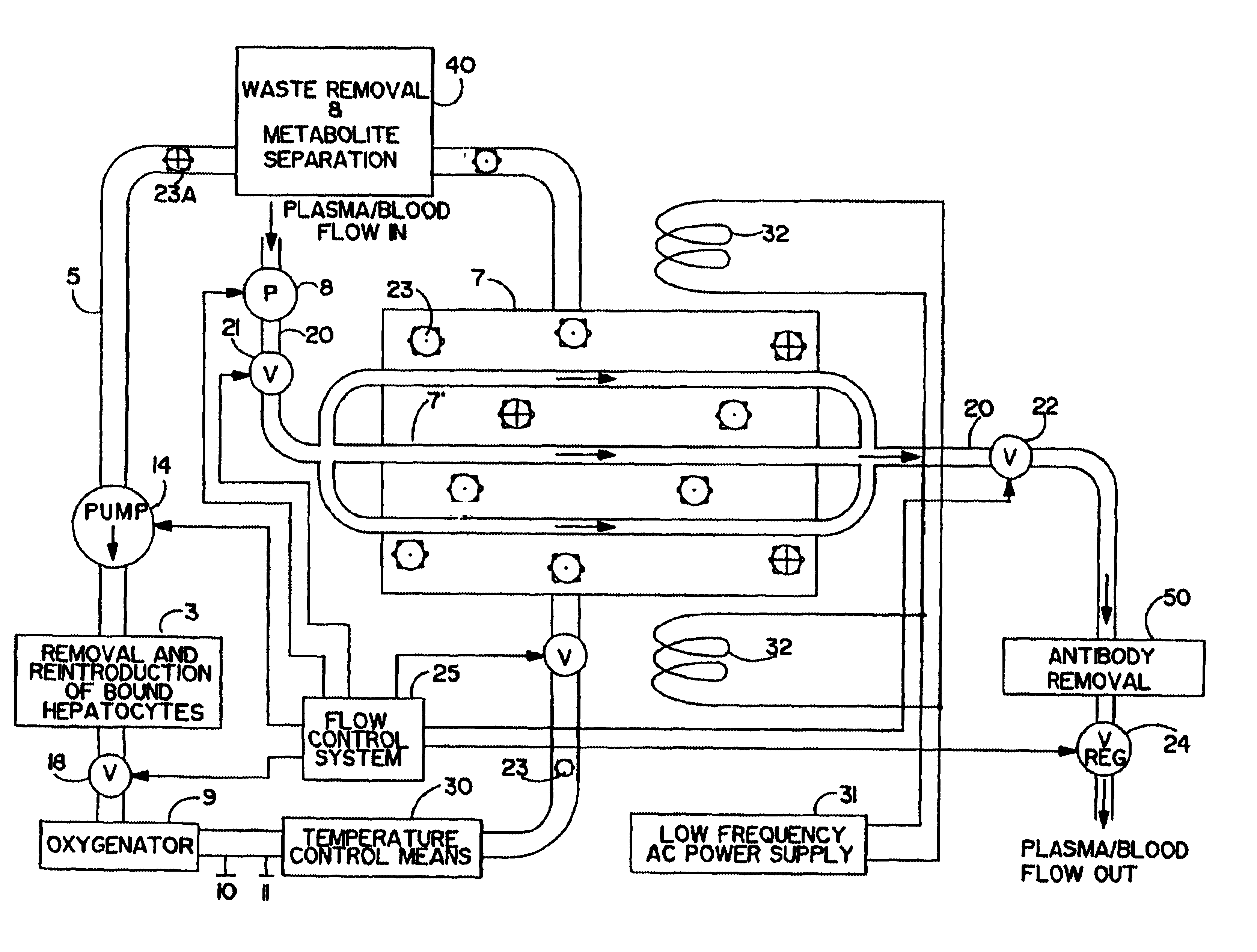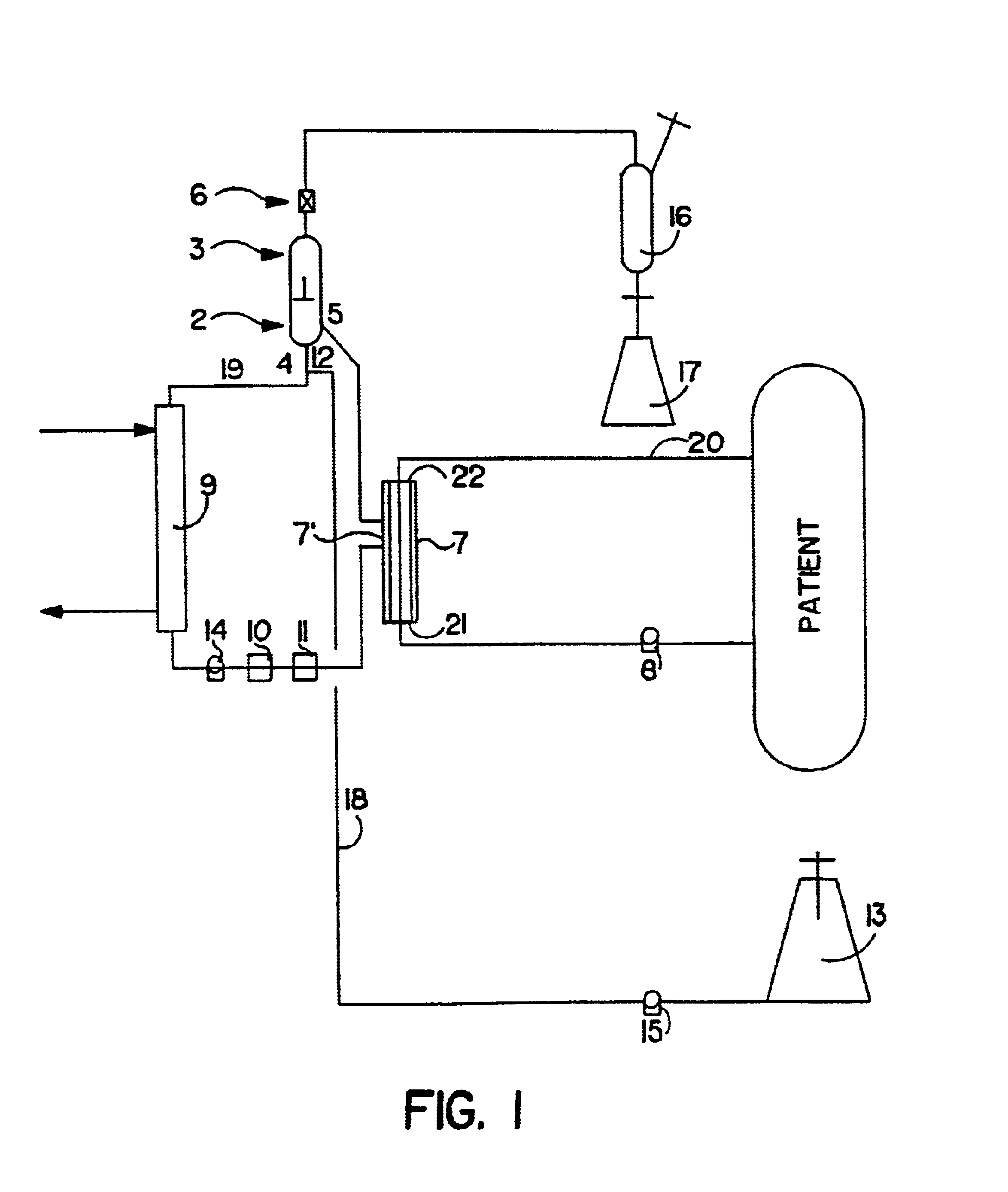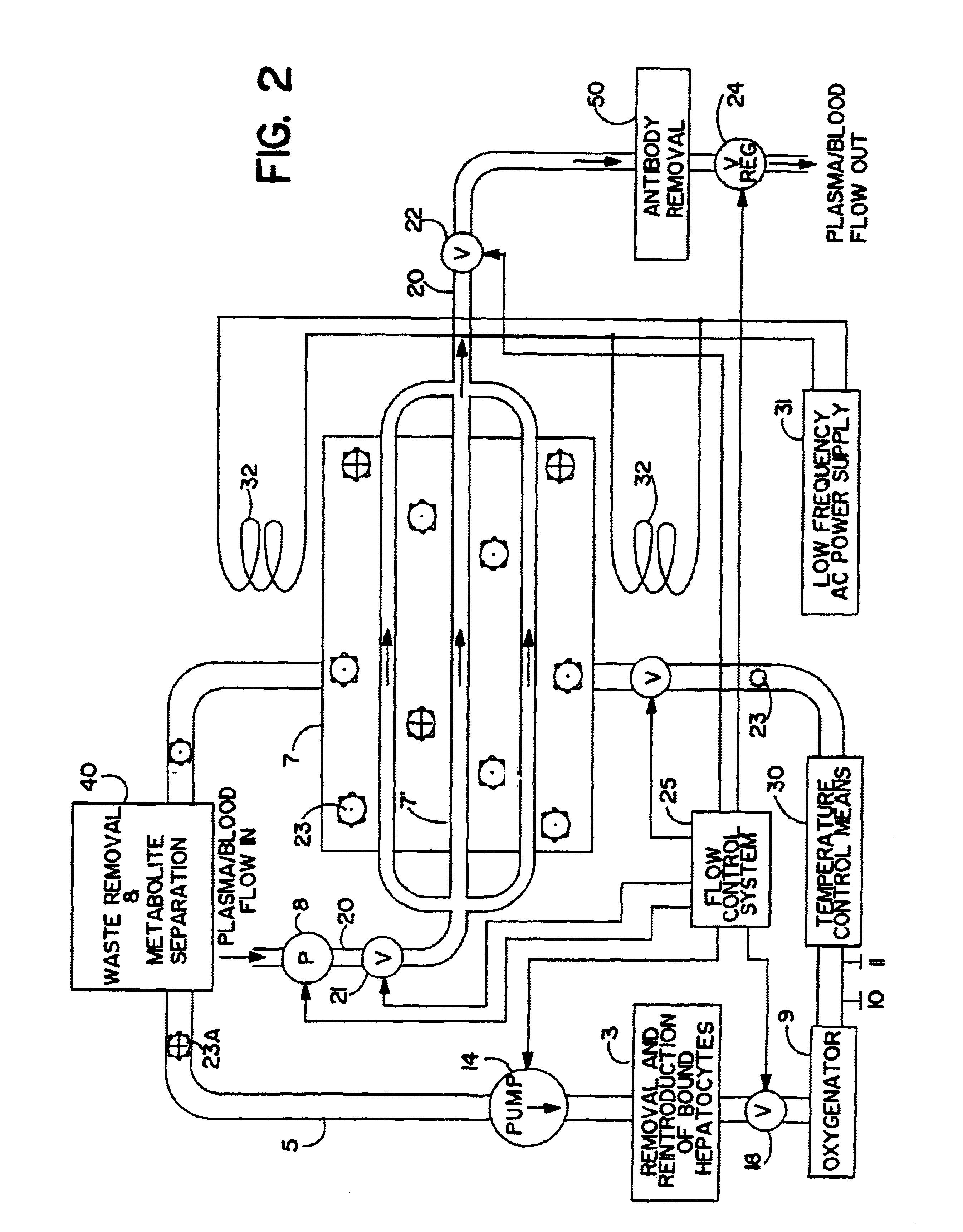Artificial liver apparatus and method
a technology of artificial liver and apparatus, which is applied in the direction of dialysis, osmosis/dialysis, moving filter element filters, etc., can solve the problems of affecting the function of the liver, affecting the treatment effect, and requiring time which is actually ill, so as to increase the time available for treatment
- Summary
- Abstract
- Description
- Claims
- Application Information
AI Technical Summary
Benefits of technology
Problems solved by technology
Method used
Image
Examples
example i
In Vitro Evaluation of the Artificial Liver Device of FIG. 1 Using Unattached Hepatocytes
Hepatocytes were isolated from Sprague-Hawley rats and / or farmer's pigs after slaughter using the technique described in Li, et al., [CITE?], 1990. Briefly, the technique was performed using collagenase (0.5% w / v, type 1) perfusion. The isolated cell population was determined to have over 80% viability as assessed by trypan blue exclusion. Following isolation, the hepatocyte were suspended in WAYMUTH 752 / L culture medium supplemented with 11.2 mg / l alanine, 12.8 mg / l serine, 24 mg / l asparagine, 0.168 mg / ml aminolevulinic acid, 0.393 mg / l dexamethasone, 0.03 mg / l glucagon, 20 units / ; insulin, and 84 mg / l gentamicin.
The mixing vessel, bioreactor and biological fluid loop were filled with culture medium and equilibrated to a 20% oxygen concentration in a total medium volume of about 350 ml. Ammonia in a concentration of about 20 ug / ml was added to the biological fluid loop as a model waste product ...
example ii
In Vivo Evaluation of the Artificial Liver Device of FIG. 1 Using Unattached Hepatocytes
The device of FIG. 1 was prepared for use with rat hepatocytes as described in Example I, except that culture medium was not introduced directly into the biological fluid loop. A venous connection between the biological fluid loop of the device and the femoral veins of a young male pig (weight=about 26 kg) was established. Blood flowing form the femoral veins of the pig was perfused through the bioreactor for about 6 hours at a flow rate of about 150 ml / min, with continuous return of blood to the pig.
The vital signs and blood chemistry of the pig were observed throughout the 6 hour perfusion period. Hepatocytes were collected from the mixing vessel through the sampling post periodically and the viability of the cells evaluated by trypan blue exclusion staining.
FIG. 5 depicts the percentage of hepatocytes will viable during the perfusion period at the time points indicated in the FIGURE.
FIG. 6 dep...
PUM
| Property | Measurement | Unit |
|---|---|---|
| Time | aaaaa | aaaaa |
| Temperature | aaaaa | aaaaa |
| Pressure | aaaaa | aaaaa |
Abstract
Description
Claims
Application Information
 Login to View More
Login to View More - R&D
- Intellectual Property
- Life Sciences
- Materials
- Tech Scout
- Unparalleled Data Quality
- Higher Quality Content
- 60% Fewer Hallucinations
Browse by: Latest US Patents, China's latest patents, Technical Efficacy Thesaurus, Application Domain, Technology Topic, Popular Technical Reports.
© 2025 PatSnap. All rights reserved.Legal|Privacy policy|Modern Slavery Act Transparency Statement|Sitemap|About US| Contact US: help@patsnap.com



